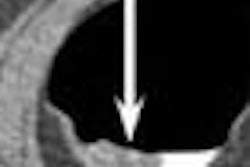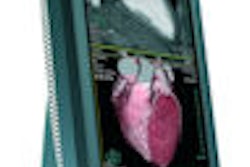
NEW YORK (Reuters Health), Mar 10 - In the real-world setting of contemporary clinical cardiology practices, adverse events following percutaneous cardiovascular procedures are substantially reduced by using radial artery access compared with using femoral access, investigators report in the March issue of Heart.
According to the Italian research team, headed by Dr. Christian Pristipino at San Filippo Neri Hospital in Rome, "To date, no large observational study has been specifically designed to control for possible confounders and appraise arterial access-related clinical outcomes across different centers and with different operators after both interventional and diagnostic procedures."
The prospective PREVAIL study was performed in June 2006, and involved 1052 patients, treated at nine hospitals, who underwent an invasive procedure requiring catheterization. Individual physicians determined choice of arterial access site (543 femoral access, 509 radial access).
In intention-to-treat analyses, patients who underwent radial artery catheterization had a significantly lower combined incidence of primary complications -- major and minor hemorrhages, periprocedural stroke, and entry-site vascular complications compared with those who underwent femoral access -- 2.0% versus 4.2% (p = 0.03), respectively. This translated to an independent, risk-adjusted, significant 63% reduction in risk, the investigators report.
There was also a significant reduction in in-hospital myocardial infarction/reinfarction (0.2% versus 1.7%, p = 0.010), and a trend toward a reduced incidence of in-hospital mortality (0.4% versus 1.5%, p = 0.067). After adjustment for clinical and procedural factors, the combined end point was reduced by 86%.
Otherwise, "the two groups were similar in the procedure length, fluoroscopy time, amount of administered dye and number of catheters used," Dr. Pristipino's team points out. Moreover, "the expertise of the operators and the volume of activity of each center did not influence the study outcomes."
They note that the reduced bleeding rates associated with the radial approach appeared to induce the physicians to use more liberal doses and combinations of anticoagulant and antiplatelet therapies, thereby preventing ischemic complications.
Heart 2009;95:476-482.
Last Updated: 2009-03-10 8:00:50 -0400 (Reuters Health)
Related Reading
CABG remains superior to PCI for severe coronary disease, February 19, 2009
Copyright © 2009 Reuters Limited. All rights reserved. Republication or redistribution of Reuters content, including by framing or similar means, is expressly prohibited without the prior written consent of Reuters. Reuters shall not be liable for any errors or delays in the content, or for any actions taken in reliance thereon. Reuters and the Reuters sphere logo are registered trademarks and trademarks of the Reuters group of companies around the world.



















